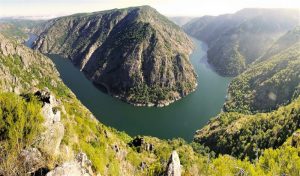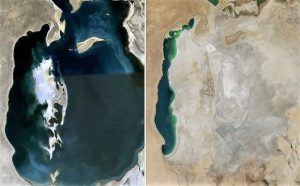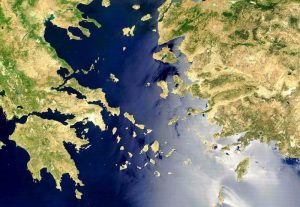Meander
It is known by the name of meander to the curve that is established by the course of a river, whose sinuosity is pronounced. They are frequently formed in the rivers of the alluvial plains that have a very scarce type of slope. Sediments in these rivers are deposited in the convex part of the meander, advancing towards the shore, while in the concave part of the river, erosion and receding of the shore predominate.
What's a meander?
A meander is a curve formed by rivers in which the sinuosity is very pronounced, advancing towards the shore in its convex part and retreating in its concave part.
Etymology
The word meander comes from the Greek word Meandro (Μαίανδρος), which is a name of a river located in Anatolia, which is called Büyük Menderes today. It seems that the Meander always caused great astonishment among the Greeks for its way of advancing twisting. So, the name became common: the meander of a river.
Characteristics of the meander
The most important characteristics of the meander are:
- Rivers become wider and shallower.
- The rivers are able to carry more water because of the contribution of the tributaries.
- They are also defined as the curves experienced by a riverbed.
- It often takes the form of a loop or a sickle.
- Nearby terrain is often flooded and inundated.
- They are generally produced in streams with moderate slopes.
- Sometimes meanders adopt rivers in the mountains and deltas near the ocean.
- The physics and geology of meanders determine how water circulates, producing areas of different depths.
- They have a great diversity of habitat which makes them capable of sustaining a greater variety of species.
Meander formation
The formation of a meander is based on a series of natural factors and processes. The configuration given in the waveform of a current is constantly changing. Once a sinusoidal channel is formed, this same channel will be subjected to a process in which the amplitude and concavity of the loops will be given, greatly increased by the effects of the helical flow due to the increase in the amount of erosion that occurs on the outside of a curve.
This helical flow can be explained as a transfer from the inside of the curve to the outside of the curve. As soon as the current enters a curve, it transforms into an angular moment, and its conservation will require an increase in speed in the interior and a decrease in the exterior, exactly the opposite of what happens.
Then, the centrifugal force of the waters raises the surface outside, moving the surface of the water transversely. This water moves downward to replace the groundwater pushed back to the end of the curve. The result of all this process is the helical flow, and the bigger the size of the curvature, the greater the angular momentum and the stronger the cross currents.
Many of those that exist are formed in the lower course of rivers because in those areas there is greater erosion, sediment deposition also occurs in this course because the rivers when moving slowly are not able to carry their sediments and is caused by this reason a slide in the slopes.
When the current circulates through a region that is submitted to tectonic elevations, the courses of the meanders begin the erosion downwards and this process is called rejuvenation, when this happens, the meanders end up becoming deep valleys known as embedded meanders.
When the embedded meanders are cut, they form a horseshoe, and these are known as abandoned meanders. It is important to mention that the bars are produced by continuous lateral migrations that form asymmetrical ridges and a depressed type of topography.
Synonyms
The word meander can also be found as a synonym for the following words:
- Bend
- Curve
- Revolt
- Sinuosity
Examples of meander
Some examples of meanders are the following:
- Del Melero Meander: it is formed by the Alagón River on the border between the municipalities of Sotoserrano in Salamanca and Caminomorisco in Cacereño, in the town of Río Malo de Abajo. It is a natural spot that can be seen from the viewpoint of Antigua. Depending on the level of the Gabriel y Galán reservoir, it can become an island.
- Meander of the segment of the Rio Grande de Manatí: in this area and up to the coast the soils of the valley through which the Rio Grande de Manatí flows are composed of alluvium which is a mixture of sands, gravel and rocks of different sizes.
- Peña el Cuervo Meander: has changed in recent decades due to human action. This meander has a mixed behavior because when it is very grown it is capable of generating lobed and transverse bars with a trajectory and operation closer to the braided system, while when its flow descends it generates ruptures of bars, which feed the formation of bars and the recovery of its usual meandering layout.
How to cite this article?
Briceño V., Gabriela. (2019). Meander. Recovered on 23 February, 2024, de Euston96: https://www.euston96.com/en/meander/










